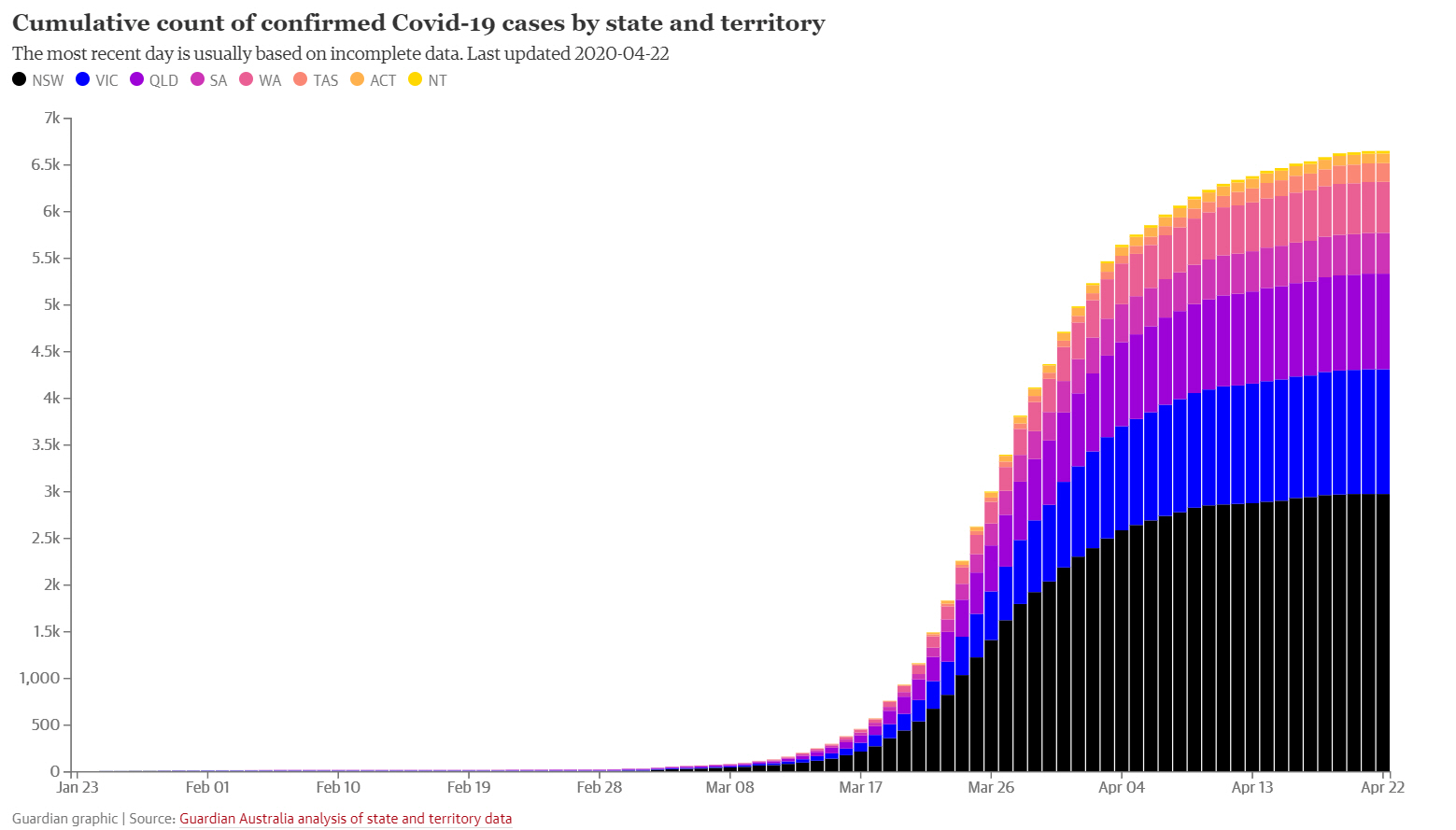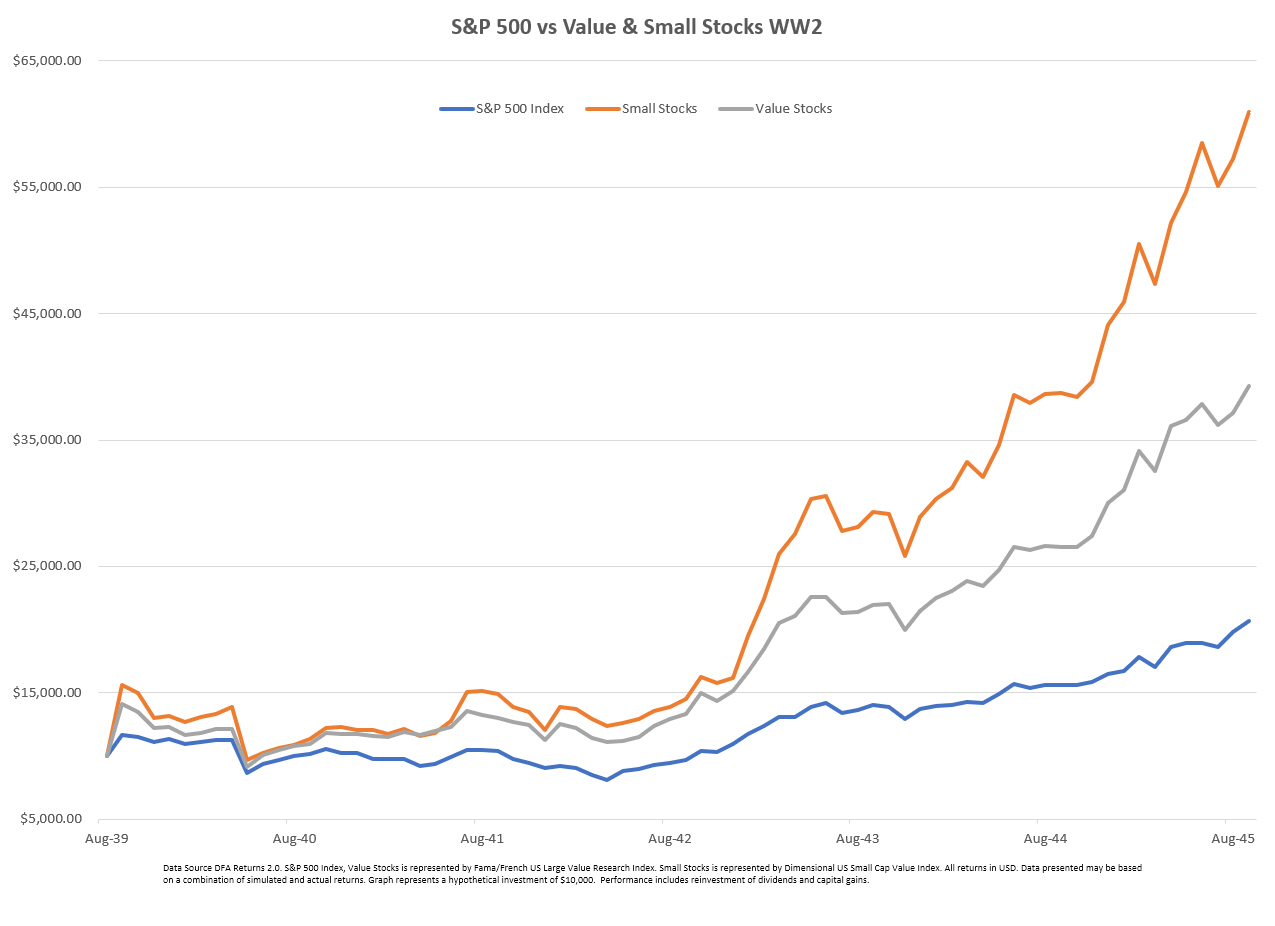Firstly, from a local Tasmanian perspective it is positive to see the daily cases appear to be slowing after the outbreak at the North-West Regional hospital. Thankfully, nursing homes that had concerns around potential exposure have been cleared. So far 77 people have recovered from the virus. Very unfortunately, eight people have passed away, thirteen are in hospital, with one person is in ICU. Hopefully, we are beginning to see the outbreak in North-West Tasmania under control.
On a national basis, nearly 500,000 people have been tested with 6,649 confirmed cases. New cases appear to be leveling off. If we use the tests as a gauge for where we are, Australia seems now to be doing quite well. Flattening the curve as they say. The good thing about this will be the easing of restrictions, which come with some pre-requisites: a transmission rate below one and strong testing and tracing capabilities in place.

Graph via The Guardian
This is another positive. We might be able to enjoy some freedoms again, however, will need to remain cautious coming into winter. A second wave, as seen recently in Singapore, will do us no favours.
Markets, as always, remain unpredictable. Who knew a contract on oil might go into negative territory? Without anywhere to store oil it becomes more about the price to hold it than the actual price of the commodity.
Back to shares, and for almost the last month there has been a substantial rally. Up 20% plus on the Australian market and up 30% plus in the US. Even with these upward movements there have been some large falls, especially on the ASX. Falls of 5%, 3.5% 1.6% 1.3% and 1.2%, all within a confine of a 20% rally that occurred in less than a month. That is volatility.
We’ve been confronted with heavy selling again this week. None of this should be unexpected
Markets will be more sensitive to various pieces of economic and financial data. We should expect them to swing wildly for the foreseeable future. We’d like to hope they would at least hold their ground, but they could as equally revisit previous lows. Nothing should be discounted as a possibility. Even going upwards again.
Possibly the best way to consider the impact of COVID-19, in respect to the various curtailments and their impacts, would be akin to countries when at war. Travel is effectively off limits; various parts of the economy are shuttered, and freedoms are curtailed. In respect to a war they are generally multi-year events. Gauging the prospect of a war’s end? Hard to do. We would hope COVID-19 won’t be a multi-year affair.
In considering market movements One particularly interesting chart is the behaviour of various market factors around WW2. Across the six-year period of WW2, the S&P 500 doubled in the US, but at one point it fell 38%. What’s interesting is the behaviour of small and value stock indexes during that period. Small stocks were up over 500% during WW2 and value stocks were up nearly 300%. At one-point small stocks fell 52% and value stocks fell 48%.
The idea is being around to capture the gains when they appear. If an investor has stuck around for the risk, they may as well enjoy the reward. It is also important to keep in mind there will be various factors in the market that may outperform when a recovery eventuates.

Business. If you’re a business owner we’d encourage you to pursue the various pieces of government support available to you. This is the best way to minimise any damage to your business, reduce the financial burden and hopefully come out the other side of this crisis.
The Tasmanian government has introduced a waiver for payroll tax for businesses paying wages up to $5 million annually who have been affected by COVID-19. There is also a waiver for tourism, hospitality and seafood businesses if they have one or more employees employed in those industries and pay wages in Tasmania. There is the Jobkeeper program from the Federal Government which may help retain staff. The state government has also introduced rules around commercial tenancies, but if you are under stress you definitely should talk to your landlord.
There is also a moratorium on rent increases in commercial premises, but any landlord looking to hike the rent in this situation is likely to find themselves with an empty property. This isn’t a commentary, but a commercial reality. Thousands of businesses have been forced to adapt their operations at a moment’s notice. Some are finding they can operate quite happily in their current circumstances. This brings into question the size of business premises needed. Other businesses unfortunately won’t survive. In six months’ time, there won’t be a lack of commercial and business space for rent.
One commercial rental manager in Sydney was quoted in the Australian Financial Review saying he’d seen rents across his portfolio negotiated down 60%!
Finally, we’re pleased to note, no MFG staff or their families have seen any COVID-19 exposure, and all remain healthy. Across our clients, we’re happy we haven’t had any reports of COVID-19 exposure. We hope this continues and you all remain in good health.
Until next time.
This represents general information only. Before making any financial or investment decisions, we recommend you consult a financial planner to take into account your personal investment objectives, financial situation and individual needs.




